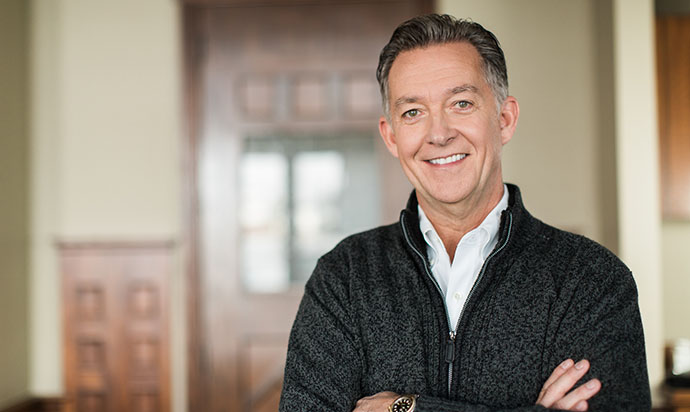

Not Your Dad's Retirement
Forget the countdown to “Freedom 55.” The road to retirement may be taking a new turn. It no longer seems to be the straight, clear path it once was.
“Twenty years ago, the vision of retirement was that we would all stop working at age 65, have cake and punch, get a gold watch and never set our alarm clocks again. We’d play shuffle board and wear aloha shirts,” said Catherine Collinson, CEO of non-profit Transamerica Center for Retirement Studies based out of Los Angeles.
Perhaps that notion of a traditional retirement was more myth than reality, Collinson points out. Nonetheless, it’s a stereotype that persists in the minds of many.
According to Statistics Canada’s Labour Force Survey of 2017, the labour force participation rate among those over the age of 60 was at 26 percent. In contrast, in 1997, only 14 percent of seniors were a part of Canada’s workforce, almost doubling in size in two decades.
Research conducted by Home Instead, Inc., franchisor of the Home Instead® network, reflects incompatible attitudes about retirement in surveys of those who have returned to work or volunteerism after an announced retirement compared with older workers planning to retire within the next five years.
To that end, 71 percent of people who have returned to work said they had looked forward to retirement, whereas a whopping 93 percent of people awaiting retirement were excited to retire. What’s more, 59 percent of those who had unretired (were working again) said they never thought they would.
Motivations to Keep Working
Financial influences could be at play. Money proved, by a wide margin, to be the most consistent theme causing people to return to work (at 71 percent) in Home Instead’s research.
In addition, financial incentives could influence older adults to keep working longer. For example, individuals who choose to wait until age 70 to receive Canada Pension Plan benefits will receive a larger amount per month, according to Employment and Social Development Canada, leading some financial planners to recommend deferring retirement to maximize monthly payments.
Financial fear also is a motivator to keep working. Twenty-seven percent of those in the Home Instead study said they returned to work for fear of running out of money. In addition, a 2017 study conducted by the Canadian Institute of Actuaries (CIA) found that an alarming majority of Canadians (61 percent) have or expect to have retirement assets under $100,000, with 10 percent reporting they expect to have less than $25,000 ready for when they retire.
No Firm Stop Date
“Canadians are living longer than ever, and many are choosing to work beyond age 65,” said John Dark, President of the Canadian Institute of Actuaries (CIA). Since 2019, he and the CIA have been calling on governments to revisit how we think about the right age for retirement.
Collinson would agree. “It doesn’t make sense to work 30 to 40 years to try to fund a 30- to 40-year retirement. We need a purpose and to stay engaged. Boomers are blazing the way. So many are working past 65 with a desire to continue working into retirement on a part-time basis and then make a flexible transition into retirement. That means that full retirement is no longer a point in time. The transition could be a decade or more, and involve shifting gears and working in a different capacity or finding a flexible arrangement, all with more time for family.”
Marci Alboher, Vice President of Strategic Communications for Encore, agreed. Encore is an American organization that helps those in mid-life put their skills and experience to work, often in the non-profit world, innovating new models for purpose and impact in the second half of life. “The reality is that older workers are here to stay. The new face of retirement is work and, for most people, that needs to be paid work. The Statistics Canada research shows that more Canadians 65 and older are working than at any time since the turn of the century, and spending more time on the job, too. The best way to transition is to give yourself time to experiment, trying out new experiences, new roles and new ways of working,” she added.
It’s Not Just About Money
“People want and need to work for a variety of reasons, which are not mutually exclusive,” Collinson said. “While research points to financial reasons, almost as many note the desire for healthy aging and maintaining social connections. Often I’ll talk to journalists and they’ll say, ‘Isn’t it a tragedy that people have to work longer?’ I’ll say, ‘No.’”
Wanting to work and continuing in the workforce are not always mutually compatible because of a variety of factors such as health issues or lack of job availability, Collinson said. Research shows that women can be particularly vulnerable if forced into retirement sooner than expected, she noted, because they have saved less than men – often a result of the pay gap, time out of the workforce to raise children and care for aging family members, and less access to benefits. Moreover, women generally live longer than men which means they need to work longer and/or save more.
Other challenges are preconceived ideas of older adults. “The stereotype is that older individuals are sitting in a chair waiting for the sun to set,” Collinson said. “Employers may be stuck in that mindset. Especially since the Great Recession, many employers have been trying to do all they can to keep their businesses viable and profitable. Implementing benefits such as flexible retirement options may not be a priority,” she said.
“Perceptions of older workers haven’t caught up with the times,” Encore’s Alboher added. “Stereotypes abound: that older workers are not open to new learning or that they are too expensive to employ. Yet the reality is the opposite. Older workers stay on the job longer, are open to new ideas and are interested in continued opportunities.”
An older workforce also should prompt a mind shift in retirement and employment models. “As a society, it can be difficult to retire old norms about retirement,” Collinson added.